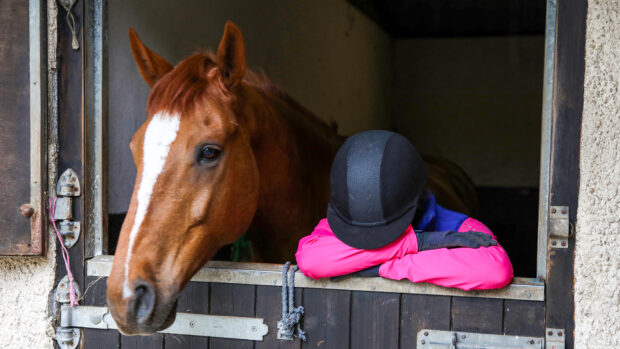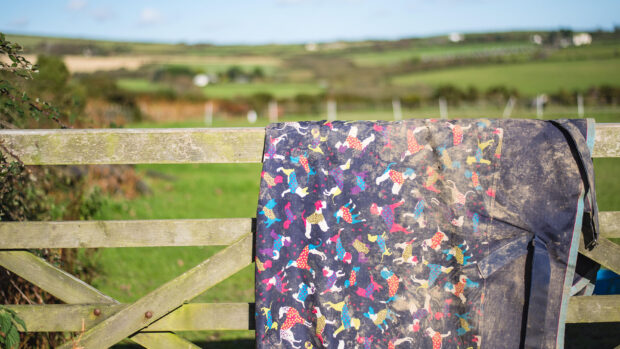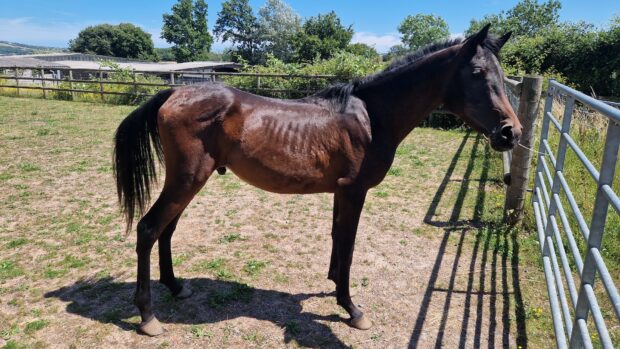Mucking out is never a favourite yard job, particularly in winter. For some, deep litter bedding is the answer — but what are the pros and cons? H&H investigates…
What is deep litter bedding?
Instead of completely mucking out, when using deep litter bedding for horses involves just removing the droppings daily and allowing a thick bed to build up. The idea is to always have a clean layer of bedding on top, with a compacted layer beneath.
There are no hard and fast rules on how often the deep litter bed is completely removed and started again. However, Gemma Stanford, head of welfare at the British Horse Society, advises finding a balance between convenience and welfare.
“It is important that beds do not become too deep and the stable should periodically be completely emptied and thoroughly cleaned. Although this system is the most economical time- and cost-wise, it is the least suitable for the horse’s respiratory health and can cause other health problems too,” she says.
Why do people deep litter?
Time is a big consideration; for example, those who keep horses on livery find deep littering through the week and then changing the bed at a weekend helps when juggling the demands of work, horse and family life. Others argue that the compacted layer at the base of the bed provides additional insulation and warmth.
For stables without rubber mats, it also prevents horses slipping on exposed concrete if they are likely to ‘dig up’ an ordinary bed. Cost is another key factor — once the initial outlay for a deep starter bed has been made, deep littering usually means less bedding is required day-to-day; all that is needed is a scattering of clean bedding on top.
Best bedding to use?
Shavings have traditionally been used for deep littered stables, as they are considered absorbent and easy to poo pick. For larger loose yards, straw is more economical as a deep littering option.
“Different types of bedding materials are used in stables to satisfy the needs of both the horse and the carer. The significant impact that poor quality bedding can have on the health and welfare of the horse, even those stabled for only very short periods of time, should not be underestimated,” says Gemma.
Bedding manufactured from high absorbency materials such as hemp, flax and shredded wood fibre can be a good choice for deep littering. While shredded cardboard and paper has the benefit of being dust free, it’s not usually considered suitable for deep littering as the droppings can be hard to separate out and the wet bedding may stain horses’ coats.
“It’s important to realise that even higher absorbency bedding will only absorb so much. The biggest challenge with deep littering is ammonia from the urine and you will get that no matter what you use unless the bed is removed regularly,” warns vet Joe Mackinder MRCVS, of Malton-based Rainbow Equine Hospital.
Health issues
Ammonia
“This is a massive irritant to the horse’s respiratory system, so any horse with known breathing issues is probably not a candidate for deep littering,” says Joe, who advises making an honest assessment of whether the stabling area is suitable in terms of air circulation and volume.
“Airflow is not the same as a draught, which can be harmful. Small, low ceilinged wooden stables with just a door opening will not have sufficient air circulation to remove ammonia and airborne bacteria.”
Bacterial & parasitic challenges
Unless deep litter beds are kept really clean, the horse is inevitably exposed to more bacterial challenge. For those susceptible to lymphangitis, cellulitis and dermatitis, this can mean an increased health risk.
“It can be very difficult to keep deep littered beds clean enough to prevent susceptible horses being affected. There is also an increased risk of thrush, so good hoof hygiene is crucial,” says Joe.
“Be aware, too, that beds which are not removed regularly are more prone to a build up of mites and lice. Deep littered stables should be completely emptied, washed and disinfected regularly to deal with this and problems like ringworm.”
Dust & mould
It’s crucial to choose clean, dry and dust/mould free bedding – both for your horse’s respiratory health and your own. “Expecting staff to work with dusty or mouldy bedding materials is unacceptable,” says Gemma.
- To stay up to date with all the breaking news throughout the Paralympics, Burghley, HOYS and more, subscribe to the Horse & Hound website
You might also be interested in:

Choosing the right bedding for you and your horse

5 wheelie good barrows for any stable yard

Subscribe to Horse & Hound magazine today – and enjoy unlimited website access all year round




